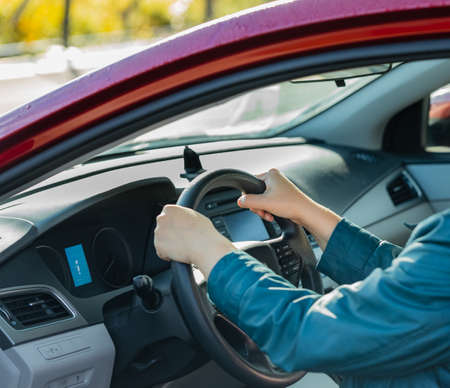1. Introduction: The Allure of Sports Cars for Daily Use
There’s something undeniably captivating about the idea of sliding behind the wheel of a sports car every morning. For many American driving enthusiasts, the thought of tackling daily commutes in a sleek, performance-oriented machine is more than just a dream—it’s a lifestyle goal. The low-slung seats, the aggressive growl of the engine, and the razor-sharp handling all promise to transform even the most mundane drive into an adventure. But how well does this fantasy hold up when reality kicks in?
Sports cars are designed for thrills: quick acceleration, tight cornering, and head-turning looks. It’s easy to see why so many people fantasize about owning one. They represent freedom, individuality, and pure driving excitement—traits that resonate deeply with American car culture. Whether it’s a classic Mustang or a modern Corvette, these cars stir emotions that few other vehicles can match.
The Dream vs. Reality Gap
Yet, there’s often a gap between expectations and day-to-day experiences. While sports cars offer exhilarating performance, they’re not always built with daily comfort or practicality in mind. Consider factors like ride stiffness, limited cargo space, and higher operating costs—these realities can quickly dampen the initial excitement.
What Draws Enthusiasts to Sports Cars?
| Dream | Reality |
|---|---|
| Pulsating acceleration on open roads | Bumper-to-bumper traffic during rush hour |
| Sleek design turning heads at every stoplight | Worrying about parking lot dings at the grocery store |
| Precise handling on twisty backroads | A harsh ride over potholes and speed bumps |
| The pride of owning an automotive icon | The anxiety of high insurance premiums and maintenance costs |
Why Take on the Challenge?
Despite these challenges, many drivers wouldn’t have it any other way. The daily dose of adrenaline, the satisfaction from mastering a powerful machine, and the joy of being part of a passionate community often outweigh practical drawbacks. For some, sports cars aren’t just transportation—they’re an essential part of their identity.
2. Practicality Check: Living with a Sports Car
When you think about daily driving a sports car, the first thing that comes to mind is probably the thrill of acceleration and sharp handling. But let’s get real—there’s more to life than carving up twisty roads. For most of us in the U.S., our cars double as grocery haulers, kid transporters, and road trip companions. So how does a sports car stack up in everyday practicality? Let’s break it down.
Cargo Space: Can You Fit Your Life In?
Most sports cars aren’t exactly cargo kings. Trunks tend to be shallow and oddly shaped, thanks to that low-slung, aerodynamic design. Need to fit golf clubs or a week’s worth of groceries? You might have to get creative. Here’s a quick comparison:
| Vehicle Type | Average Trunk Space (cu ft) | Fits Two Suitcases? |
|---|---|---|
| Sedan | 15-16 | Yes |
| SUV | 30-40+ | Definitely |
| Sports Car (Coupe) | 7-10 | Maybe |
If you’re hauling anything more than a gym bag, you’ll need to plan ahead.
Passenger Comfort: Fun for All?
Sleek bucket seats look cool, but after an hour in traffic, your back might disagree. Rear seat space is often tight—or non-existent. In many two-seaters, forget about bringing more than one friend along. Even four-seat coupes usually have cramped rear quarters best left to kids or very short adults.
Front Seats:
- Great support for spirited driving.
- Might feel snug if you’re taller or broader.
Rear Seats:
- Often an afterthought—think “emergency use only.”
- Minimal legroom and headroom in most models.
Fuel Economy: Speed vs. Savings
No surprise here—sports cars tend to guzzle more gas, especially if you enjoy using all those horses under the hood. Premium fuel is common, too. Compare that with your average family sedan or hybrid, and the difference adds up at the pump.
| Car Type | City MPG | Highway MPG | Fuel Type |
|---|---|---|---|
| Sedan (Gas) | 24-28 | 34-38 | Regular Unleaded |
| SUV (Hybrid) | 30-40+ | 35-40+ | Regular Unleaded/Electric Assist |
| Sports Car (V6/V8) | 14-20 | 22-28 | Premium Unleaded Recommended |
City Driving: Is It Stress or Joy?
Navigating American city streets in a sports car can be a mixed bag. Tight steering and quick reflexes make dodging potholes and weaving through traffic fun, but low ground clearance means speed bumps and steep driveways are your enemies. Parallel parking? A breeze with a compact coupe—unless poor visibility makes it hard to judge distances.
Main Takeaways:
- Cargo space is limited—pack light!
- Back seats are mostly for show (or small kids).
- You’ll visit gas stations more often—and pay more per gallon.
- Maneuvering in traffic is enjoyable, but watch out for curbs and parking challenges.
If you’re thinking about making a sports car your daily ride, these practicalities are worth considering alongside the pure driving joy they deliver.

3. Performance Perks: The Daily Drive Transformed
Let’s be honest—sliding behind the wheel of a sports car every morning never gets old. Even if your commute is just a few miles to work or a quick run to the grocery store, the difference is night and day compared to driving an ordinary sedan or SUV. Here’s how performance perks can totally transform your daily drive:
The Joy Factor
There’s something undeniably fun about firing up a sports car. That throaty exhaust note? It wakes you up better than coffee. The low-slung seating position and snug cockpit make you feel like you’re part of the car, not just sitting on top of it. Even mundane errands become mini-adventures when you’re piloting a vehicle built for excitement.
Responsiveness in Real Life
Sports cars are engineered to respond instantly to your inputs. Quick steering lets you zip through city traffic with ease. Brakes are sharp and confidence-inspiring, so stop-and-go situations feel less stressful. Acceleration is immediate—no lag when you need to merge onto the freeway or pass a slowpoke. Here’s how it compares to other vehicles:
| Sports Car | Sedan/SUV | |
|---|---|---|
| Steering Feedback | Direct, precise | Light, sometimes vague |
| Acceleration | Instant, thrilling | Gradual, predictable |
| Braking Power | Strong, responsive | Adequate, softer feel |
| Corners & Curves | Planted, confident | Body roll, less grip |
Everyday Engagement: Making Every Mile Count
The real magic of daily driving a sports car comes from engagement. You’re not just going from point A to point B—you’re experiencing every turn, every acceleration, every downshift. Even if you’re stuck in traffic, paddle shifters or a manual gearbox add an interactive layer that keeps things interesting. Rain or shine, city streets or backroads, that sense of connection puts a smile on your face and makes even routine drives memorable.
4. Cost of Ownership: Gas, Maintenance, and Insurance
When it comes to daily driving a sports car, the thrill behind the wheel is undeniable. But let’s be real—owning one of these machines isn’t just about speed and style. The costs can add up fast compared to your typical sedan or crossover. Here’s a breakdown of what you might expect to spend on gas, maintenance, and insurance if you make a sports car your daily driver.
Gasoline: More Power, More Money
Sports cars are engineered for performance, not fuel efficiency. That means you’ll likely be filling up more often—and with premium fuel too. While your neighbor in a Toyota Camry might get 30+ mpg on regular gas, your Mustang GT or Supra could be sipping (or guzzling) premium at 18-22 mpg.
| Standard Sedan | Sports Car | |
|---|---|---|
| Fuel Type | Regular Unleaded | Premium Unleaded |
| Average MPG | 28-35 mpg | 18-25 mpg |
| Annual Fuel Cost* | $1,500 – $2,000 | $2,500 – $3,500+ |
*Based on 12,000 miles/year and national average gas prices.
Maintenance: Performance Parts = Higher Bills
Regular maintenance on a sports car is rarely cheap. High-performance brakes wear out faster (and cost more to replace), tires are often low-profile and pricey, and even oil changes can run double what you’d pay for a standard vehicle. Plus, if your car has turbochargers or advanced electronics, those repairs can get expensive quickly.
| Standard Sedan | Sports Car | |
|---|---|---|
| Oil Change (Synthetic) | $50 – $75 | $100 – $250 |
| Tire Replacement (Set of 4) | $400 – $600 | $800 – $1,600+ |
| Brake Pads/Rotors (Front Set) | $300 – $500 | $700 – $1,200+ |
| Annual Maintenance Estimate* | $600 – $1,000 | $1,200 – $2,500+ |
*Routine service; does not include major repairs or modifications.
Insurance: The Price of Speed and Style
If you’re daily driving a sports car in the U.S., expect your insurance rates to jump—sometimes dramatically. Insurers see these vehicles as higher risk due to their value and performance capabilities. Even with a clean record, coverage for a Corvette will almost always cost more than for a Honda Accord.
| Standard Sedan | Sports Car | |
|---|---|---|
| Average Annual Premium* | $1,200 – $1,800 | $2,000 – $4,000+ |
*Varies by state, age, driving history.
The Bottom Line on Daily Costs
If you love the daily rush that comes with driving a sports car but also want to keep an eye on your wallet, it pays to do the math ahead of time. Those extra dollars spent at the pump and shop are all part of the ownership experience—one that’s as thrilling as it is demanding on your budget.
5. Weather, Roads, and Daily Hassles
If youre thinking about daily driving a sports car in the U.S., you can’t ignore the realities of weather, road conditions, and those everyday parking struggles. Let’s break down how these factors shape your experience behind the wheel.
Weather: Sunshine vs. Snowstorms
Sports cars are built for fun—usually on dry, open roads. But Mother Nature doesn’t always cooperate. Here’s what to expect:
| Weather Condition | Impact on Sports Car Driving |
|---|---|
| Sunny & Dry | Ideal for grip, handling, and letting loose. Expect smiles per mile. |
| Rainy | Traction control works overtime; lightweight cars may hydroplane more easily. |
| Snow/Ice | Low ground clearance and summer tires make winter driving risky or impossible. |
| Extreme Heat | AC might struggle; interiors heat up quickly with lots of glass and leather. |
If you live in places like Southern California or Arizona, you’ll enjoy more days perfect for spirited drives. In Midwest or Northeast winters, though, you might have to leave your pride and joy parked for weeks—or invest in a solid set of winter tires (and nerves of steel).
Road Quality: Potholes Are Not Your Friend
American roads can be unpredictable. Sports cars often have stiff suspensions and low-profile tires, which means they feel every crack and bump. Bad pavement isn’t just uncomfortable—it can damage expensive wheels or scrape the undercarriage.
| Road Type | Sports Car Experience |
|---|---|
| Smooth Highway | Cruising bliss; unleash some horsepower (within legal limits). |
| Pothole-Ridden Streets | Nerve-wracking; risk of tire/wheel damage goes up. |
| Speed Bumps/Steep Driveways | Approach at an angle or risk scraping your front lip. |
| Cobblestone/Brick Roads | Loud and jarring—leave these for classic car parades! |
If your commute involves rough city streets or rural routes with uneven pavement, daily driving a sports car could get old fast. It pays to know your local roads before making the leap.
Parking: The Everyday Battle
You finally reach your destination—but where do you park? Sports cars sit lower than most vehicles and usually have wider doors and longer noses. That means tight parking spots can be a headache, and curb rash becomes a real threat.
Main Parking Challenges for Sports Cars:
- Tight spaces make getting in and out tricky—watch those door dings!
- Curbside parking risks scratching wheels or bumpers.
- Parking garages may have steep ramps or speed bumps that threaten your splitter.
- Open lots invite unwanted attention (and possibly theft).
If you don’t have secure home parking or easy access at work, factor this hassle into your daily routine.
The Bottom Line on Daily Hassles
Your environment plays a massive role in the day-to-day practicality of owning a sports car. Weather extremes, rough roads, and difficult parking situations can turn dream commutes into daily headaches if you’re not prepared.
6. Social and Emotional Impact
Daily driving a sports car in the United States is about more than just speed, handling, or head-turning design. It comes with a unique set of social and emotional experiences that can be both rewarding and challenging.
Attention: The Double-Edged Sword
If you’ve ever driven a bright red Corvette or a sleek Mustang GT to your local grocery store, you know what it feels like to attract attention. People stare, some give you a thumbs up, while others might roll their eyes. Whether you love or hate it, driving a sports car puts you in the spotlight almost everywhere you go. For some drivers, this is part of the fun—your car becomes an extension of your personality and style. For others, constant attention can feel overwhelming, especially if you prefer flying under the radar.
Stereotypes and Perceptions
Sports cars come with baggage—not literal baggage, but social stereotypes. In the U.S., people may assume things about you based on your ride:
| Stereotype | Common Perception | Reality Check |
|---|---|---|
| “Show-off” | You drive fast for attention | Maybe you just love great engineering! |
| “Midlife crisis” | You bought it to feel young again | Sports cars are for all ages and passions |
| “Wealthy” | You must have deep pockets | Many sports cars are surprisingly affordable used |
These stereotypes can affect how strangers treat you on the road and even influence interactions with friends, neighbors, or co-workers.
The Emotional Rollercoaster
Behind the wheel of a sports car every day, emotions run high—in good ways and bad. There’s genuine excitement when you fire up the engine each morning and take the long way home just for fun. But there can also be anxiety about parking in crowded lots or frustration when people make snap judgments about who you are.
| Emotional Reward | Drawback |
|---|---|
| Pride in ownership and driving experience | Anxiety over theft or damage in public spaces |
| Increased confidence behind the wheel | Feeling judged or stereotyped by others |
| Satisfaction from driving something unique and powerful | Occasional envy or negative comments from strangers |
Ultimately, daily life with a sports car is as much about emotions and perceptions as it is about horsepower or practicality. How these factors impact your experience depends on your personality—and how much value you place on standing out from the crowd.
7. Final Thoughts: Is a Sports Car Right for Your Daily Life?
After exploring what it’s like to daily drive a sports car, it’s clear there’s no one-size-fits-all answer. Owning a sports car is an experience that blends excitement and challenge, often trading off everyday practicality for performance and fun. Let’s quickly review the key points you should consider before making a sports car your go-to ride.
Performance vs. Practicality: What Matters More?
| Sports Car | Traditional Daily Driver | |
|---|---|---|
| Driving Experience | Thrilling acceleration, sharp handling, engaging feedback | Smooth, comfortable, predictable |
| Cargo Space | Limited trunk and interior storage | Plenty of room for groceries, gear, and passengers |
| Ride Comfort | Stiffer suspension, less forgiving on rough roads | Softer ride, better suited for long commutes and potholes |
| Fuel Economy | Often lower due to performance tuning | Usually more efficient and wallet-friendly |
| Visibility & Parking | Lower seating position can make visibility tricky; wider bodies can be tough in tight spots | Easier to see out of and park in crowded lots or city streets |
| All-Weather Capability | May struggle in snow or heavy rain unless equipped with proper tires/traction control | Generally more stable year-round with AWD/FWD options available |
Ask Yourself These Questions Before Taking the Plunge:
- How important is comfort on your daily route? If you deal with traffic jams and potholes every day, a sports car might test your patience.
- Do you need extra seats or space? If you have kids or haul a lot of stuff, most sports cars won’t be ideal.
- Is fuel economy a priority? Be ready for more frequent gas station stops compared to an economy sedan or crossover.
- What’s your weather like? Living somewhere with harsh winters could make daily driving a rear-wheel-drive coupe tricky.
- How much do you value the “fun factor” over convenience? If every commute feels like a track day, those trade-offs might be worth it to you.
The Bottom Line: Weighing Your Needs Against Your Wants
If your heart says “yes” but your brain says “maybe,” try to balance both sides. Many drivers find joy in owning a sports car despite the compromises—it can turn even a dull commute into something memorable. But if practicality and reliability are at the top of your list, it may be worth considering alternatives or keeping the sports car as a weekend toy. Whatever you choose, remember: the best car for daily life is the one that fits your lifestyle and makes you smile every time you hit the road.


